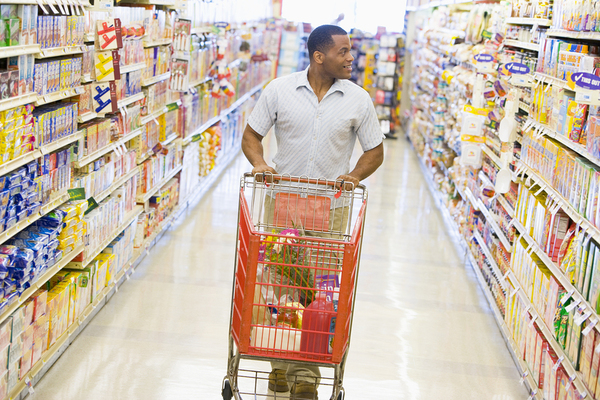Building blocks of augmented reality (AR) have been around for several years, but at first, brands weren’t quite sure what to do with the technology.

Back in 2011 or so, you could use your smartphone to, say, scan a QR code on a package of dry pasta and be taken to a website showing a photograph of the prepared dish. But this wasn’t all that engaging. Though we’re still in somewhat of a trial and error phase of putting AR to work in CPG packaging, brands have come up with some truly exciting use cases recently. It could be the beginning of a whole new direction in CPG packaging design. Here are some examples.
Enhancing the Consumption Experience
Some brands go beyond the label to enhance consumers’ sensory experience of a product. Boursin cheese found a way to use VR and 360-degree CGI video to immerse consumers in a tour of a refrigerator full of ingredients, including Boursin cheeses. They used this in an experiential roadshow as an alternative to traditional cheese sampling.
Patron tequila did something similar with 360-degree video to immerse consumers in a behind-the-scenes tequila-making process at some of its event booths. VR experiences are gaining traction in food and beverage events. But AR is also happening on retail shelves and in consumer homes.
Adding Interactivity to Product Packaging
If your spouse comes home from the supermarket and relates the experience of a jar of pasta sauce telling them a story, they’re not necessarily putting you on. Francesco Rinaldi pasta sauce created AR-enhanced labels that, when paired with an AR app, cause “Mrs. Rinaldi” to tell a brief story about the brand’s products.

Beauty brand Sephora allows consumers to use the Sephora app to virtually try on different types of eye, lip, and cheek makeup products before buying.
One of the best things about such AR apps is that they don’t require an entire revamp of product labeling, yet they offer a “portal” into a much richer level of information for consumers who want to know more. For example, consumers with a thirst for new experiences will soon engage with their favorite beers, ciders, and soft drinks, by simply scanning any can or bottle with their smartphone.
Episodic Games Are Great for Engaging Product Packaging with Kids
CPG packaging designs can now incorporate barcodes or other scannable elements that pull consumers into games. It’s a good fit for “fun” foods like snacks and kids’ cereals. In 2017, Wise foods created a game where consumers would scan a code on the packaging and then play a game where they virtually “hit” balls thrown to them by a virtual pitcher from the New York Mets or the Atlanta Braves.
Lego did something similar with its Scooby-Doo models, creating a virtual reality game for kids that let them virtually drive The Mystery Machine on digital adventures.
Augmented reality based on CPG packaging has come a long way in recent years. Brands can use it to educate and entertain consumers and engage with them in memorable ways. How might your brand use AR to improve the consumer experience? Find ways to engage with them using AR and their smartphones, and you could turn a casual consumer into a loyal fan. PKG Brand Design is always on the forefront of new CPG branding and packaging initiatives; please subscribe to our blog for the latest package design industry news!


.jpg)

-min%20(2).png)


